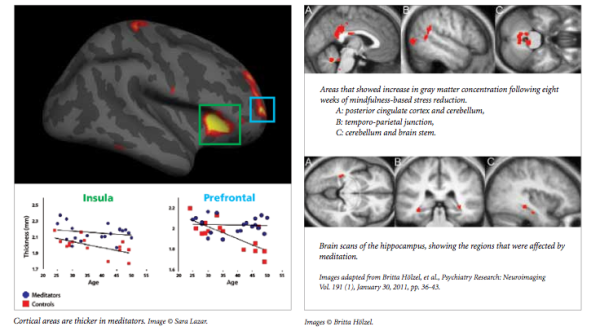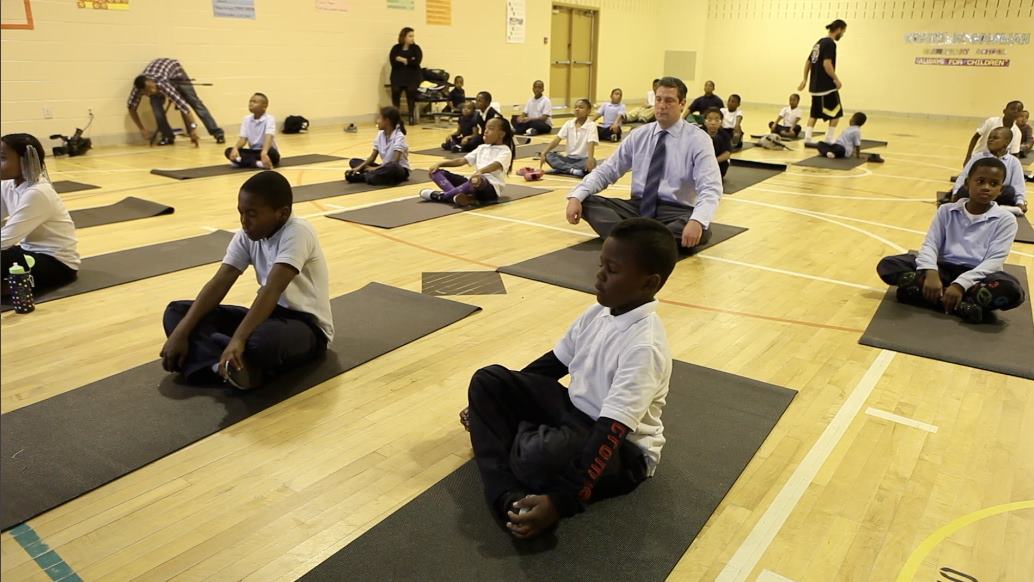Some of the most exciting work we do at Redstone is to help clients use strategy to realize the impact they want to make in the world. As part of the strategic planning process, Redstone project teams often craft case studies to illustrate an approach that the team is considering, gleaning lessons from elsewhere in the field, or across sectors.
In recent strategy work with a client that was focused in field building, the impressive growth of mindfulness in schools kept coming up. Mindfulness is a meditative technique with Buddhist roots that is now practiced in schools and workplaces across the country – even in the House of Representatives. The project team took a moment to identify the factors that may have helped it evolve from a spiritual practice into a skill that is increasingly considered fundamental to a child’s education.
Mindfulness has a strong basis in publicly-engaged science.
In the 1970’s, biologist Jon Kabat-Zinn founded the Center for Mindfulness at UMass Medical School, which offered an eight-week therapeutic course that came to be called the Mindfulness-Based Stress Reduction (MBSR) Program. It functioned as a clinic for individuals who suffered from a wide range of ailments – from obesity to insomnia – for whom other treatments had failed. For patient after patient, the program worked.
Kabat-Zinn rigorously documented the findings his clinic yielded. Randomized clinical trials and grants from the National Institute of Health’s National Center for Complementary and Alternative Medicine followed. fMRI technology also helped make major breakthroughs in supporting claims of the concrete benefits of mindfulness. Per Richie Davidson at the Center for Healthy Minds at the University of Wisconcsin-Madison: “Even short amounts of practice can induce measurable changes in the brain that can be tracked on a brain scanner.”

Mindfulness integrated into existing practices.
As one teacher described, mindfulness is “not one more thing that I have to put in my mind.” From the onset, mindfulness was framed as a simple tool that each of us already possesses – the ability to pause for a moment, and take stock of our thoughts, feelings, and environment. Crucially, in schools, it did not threaten to further complicate the already jam-packed days of teachers and students. This frame certainly helped it to scale rapidly. To achieve this outcome, Jon Kabat-Zinn first removed mindfulness from its Buddhist casing, placing MBSR in a scientific – and practical – context. “It’s not about Buddhism, but about paying attention,” said Jon Kabat-Zinn.
“It doesn’t actually take any more time to say good-bye or hug your children or whatever it is in the morning when you’re on your way to work. But the mind says, “I don’t have any time for this.” But actually that’s all you have time for is this, because there’s nothing else than this.”
Jon Kabat-Zinn | On Being
Champions and influencers rallied around mindfulness as a vital tool in classrooms.
Representative Tim Ryan, A.K.A. “Congressman Moonbeam” attended an MBSR workshop and returned to session with a passion to see mindfulness applied both in his own workplace and in classrooms. He then earmarked nearly $1 million to teach mindfulness to preschool children in his district. Goldie Hawn has also been an outspoken proponent of mindfulness, and founded the Hawn Foundation after thinking of ways she could help the “enormous amount of anxiety facing today’s kids.” The foundation is dedicated to helping schools take up the MindUP program. By 2005 the foundation’s MindUP program was already being used in more than 5,000 schools, and has served “nearly one million children in the US and abroad.” These champions helped elevate mindfulness into the public consciousness.

The mindfulness movement tapped into deeper social narratives that helped it gain footing in schools.
Schools are increasingly recognizing the value of cultivating students’ social and emotional development from a very early age. “Social and emotional learning (SEL) is increasingly accepted by educators and researchers as a process to cultivate life skills that foster personal development, academic achievement, and a more empathetic school climate.” Within this framework, mindfulness is being used as a method to help introduce SEL into classes, and across districts, around the globe.
“We can intentionally shape the direction of plasticity changes in our brain. By focusing on wholesome thoughts, for example, and directing our intentions in those ways, we can potentially influence the plasticity of our brains and shape them in ways that can be beneficial. That leads us to the inevitable conclusion that qualities like warm-heartedness and well-being should best be regarded as skills.”
Richie Davidson, The Center for Healthy Minds | Mindful
Mindfulness also offers myriad benefits for teachers. When practicing mindfulness, teachers experience less stress and burnout and tend to have more emotionally supportive and better-organized classrooms. Numerous studies show that when practicing mindfulness, children and adults alike experience improved attention, greater self-compassion, a greater ability to regulate emotions, and reduced anxiety and stress.
To conclude, we invite you to take a lesson in mindfulness from some of its youngest practitioners. Filmmakers Julie Bayer Salzman and Josh Salzman produced the following three-minute film to let children of Citizens of the World Charter School, in Mar Vista, California teach us how to be mindful in their own words. “We made “Just Breathe” with our son, his classmates and their family members one Saturday afternoon,” the filmmakers write.
“The film is entirely unscripted – what the kids say is based purely on their own neuro-scientific understanding of difficult emotions, and how they cope through breathing and meditation. They, in turn, are teaching us all.”
*Cover photo is a visualization of a DTI measurement of a human brain | Thomas Schultz, Wikimedia Commons